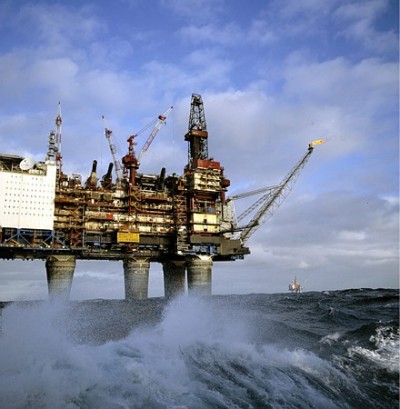The storm and flooding that severely damaged wide areas of southwestern Norway over the weekend hit a region already swamped by job losses and financial troubles. Another 900 layoffs were announced Monday in Kristiansand, part of the Agder-Rogaland region that’s home to the country’s biggest concentration of oil- and oil service workers. All of them are affected by the dive in oil prices, and now things may get even worse.

Thousands of residents of the region between Stavanger and Kristiansand have had a rough year. Unemployment is the highest in the country, after waves of cutbacks and layoffs at oil and offshore companies. That has sent ripple effects into the hotel, restaurant and retail sectors, and especially the real estate market.
On Monday, National Oilwell Varco Norway announced that another 900 of its employees have been notified that their jobs will disappear as well. The company, with its main Norwegian office in Kristiansand, has already laid off 1,500 full-time workers plus all staff on external contracts. The new wave of 900 job losses is blamed on a lack of new business for a company that delivers drilling equipment to both land-based and offshore installations, along with pipe inspection services.
Bad news rising
The aftermath of the weekend storm prompted another large manufacturer in an unrelated area to announce that its flooded factory and damaged inventory could force additional layoffs, of as many as 400 employees. That’s the last thing needed in a region already struggling in a severe economic downturn, not least right before Christmas. “The flooding of the NorDan factory affects many jobs,” local fire chief John Skåland told state broadcaster NRK as he tried to coordinate emergency operations in the hard-hit town of Moi. “Both here and at another factory, there can be huge consequences if machinery has also been destroyed.”
The weekend storm hit just days after Norway’s central bank, Norges Bank, released results of its latest survey of companies making up its so-called “Regional network.” The companies are questioned five times a year about their business situation and outlook, providing a representative picture of Norwegian business both from a geographic and industry perspective.
The news wasn’t good, with little if any prospect for growth, and once again, it was worst in the Stavanger-Kristiansand region. Kjetil Olsen, chief economist at Nordea Bank in Norway, noted that unemployment is rising in the oil counties of Rogaland and Vest-Agder, along with Hordaland and Møre og Romsdal farther to the north. And Olsen told newspaper Dagens Næringsliv (DN) that the economic downturn was “highly unusual” because of its sharp geographical differences.
‘Divided economy’
“We have never had a more divided economy than now,” Olsen told DN. He noted that if the regions hardest-hit by the low oil prices and subsequent decline in oil company investment are removed from Norway’s overall economic picture, “you’ll see a tendency that the rising unemployment is on its way down again.” Not much, he added, but he spots movement.
“It underlines how this is a very unusual downturn,” Olsen said. “There is one sector that’s hit very hard (oil). So measures have been put in place like low interest rates, and the krone has weakened a lot, which means that other sectors of the economy that aren’t oil-related are better off.”
Stagnation and a split characterize the Norwegian economy, in Olsen’s view. Kjersti Haugland of DNB Market told DN she also seen “big differences” among businesses and regions, but she thinks the numbers are generally weak. “No one is doing really well,” Haugland said.
Olsen stressed that the weakest development is within the oil supply industry, with a drop in production of around 6 percent so far this year. National Oilwell Varco’s announcement of more job elimination on Monday confirms that. With many oil- and oil-service firms located along the west- and southern coasts along the North Sea, the weekend storm and flooding sent salt into the wounds, along with enormous quantities of wind and water.
newsinenglish.no/Nina Berglund

